This page has been translated with google translate, there may be errors in the stories.
You will find the exhaust of a marine diesel in two variants, dry and wet. Dry exhausts are generally not very common, boats with cooling pipes under the boat usually have a dry exhaust. The wet exhaust is the most common exhaust system and I will go into that in more detail in this article. Although this system requires little maintenance, there are a few points to consider.
Both directly and indirectly cooled engines with a wet exhaust have an impeller pump and are a sensitive part that cannot withstand dry running. If the cooling fails, the existing engine alarm will go off, but this is already too late for the rubber impeller and the plastic parts of the exhaust system. Due to the hot engine gases, these parts melt quickly and are then irreparably damaged. It is therefore important to react quickly if the cooling of the engine stagnates because the plastic parts melt within two minutes. If the cooling stagnates, for example due to water plants, a piece of plastic or the suction of air, the exhaust noise measurement will change. Even a slightly reduced flow of cooling water can often be heard first. Because the temperature of the exhaust is the first to increase with a reduction in cooling water, it is advisable to install an exhaust temperature sensor with a buzzer on the dashboard, often this is a combined meter / buzzer panel.
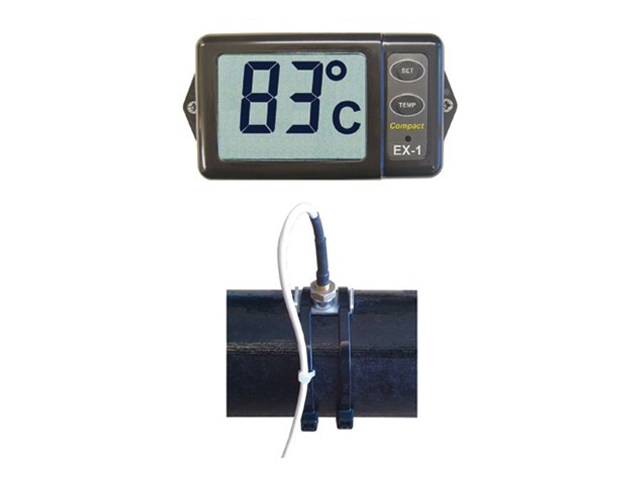
NASA Exhaust alarm
Schematic cooling system.
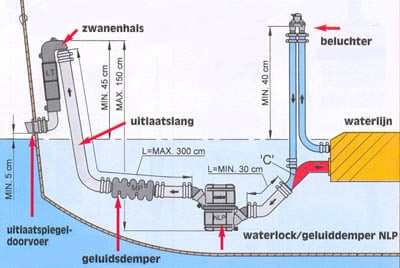
Wet exhaust system.
Weed filter
A weed filter can become clogged by duckweed, for example, but it can also suck in air. The effect is the same, there is little or no cooling in both cases. When cleaning the filter, it is wise to inspect the rubber ring to make sure it is still good and has not dried out. Preventive replacement every few years is also highly recommended, this part only costs a few euros but can cause a lot of trouble if it no longer seals properly.
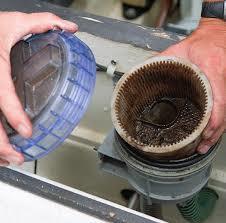
Impeller pump.
The rubber impeller is subject to wear, which is well known, but it is less known that the impeller cover is also subject to wear and this wear causes a reduced cooling capacity, replacing this part is therefore recommended if it has too many signs of wear. shows.
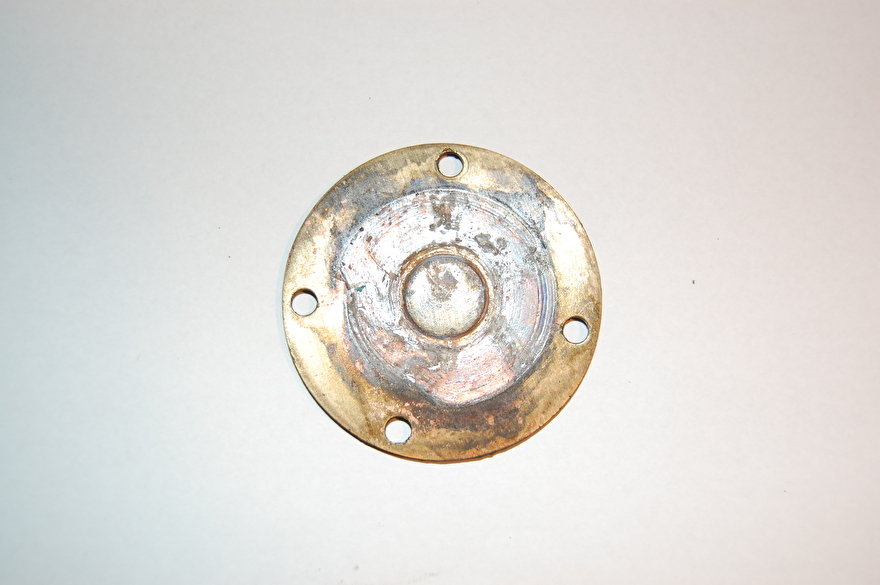
Worn impeller cover.
Oil cooler / heat exchanger.
Large engines have an oil cooler for the engine oil and / or for the hydraulic gearboxes. The oil cooler for the gearbox is the first in the row of coolers that you can find on an engine. The oil cooler and the heat exchanger consist of an arrow bundle often made of copper through which the outboard water flows, the oil or the coolant to be cooled surrounds the arrow bundle. These two systems must be properly winterized because a small amount of water can damage all the pipe bundles if it freezes and cause leakage. If an oil cooler leaks, you get white-like emulsion in the engine, if the heat exchanger leaks, outboard water together with the coolant will be forced out of the system via the valve in the filler cap when the engine is running.

Heat exchanger.
Aerator and exhaust injection.
After the heat exchanger ready, the outboard water goes to the injection point of the water cooled exhaust and is forced out by the exhaust gases from the running engine. An aerator prevents the outboard water from lifting into the engine block when it is stationary. The site also includes a section on how to check an aerator and how to perform maintenance.
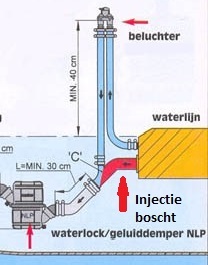
The red colored bend is the injection point.
Wet Exhaust Hose.
The wet exhaust has a number of advantages over a dry exhaust. A wet exhaust is very effective when it comes to reducing exhaust noise and barely heats up, allowing a rubber hose to be used. By mixing water and exhaust gases, the exhaust pressure is lowered, making it quieter compared to a dry exhaust, the lower the temperature of the exhaust gases, the lower the exhaust noise. The exhaust gases and the cooling water leave the exhaust with jerks and a pressure of 3 to 4 bar. Exhaust hose is made of a rubber type and reinforced with a steel spiral to prevent kinks. The hose can withstand the high temperature of the cooling water, but the hose cannot withstand only the exhaust gases, so no cooling water means the end of the discharge hose. Normal exhaust hose can withstand 100 degrees Celsius, but there are also hoses that can have 250 degrees Celsius. The silicone hose can handle temperatures from -50 to 250 degrees Celsius.
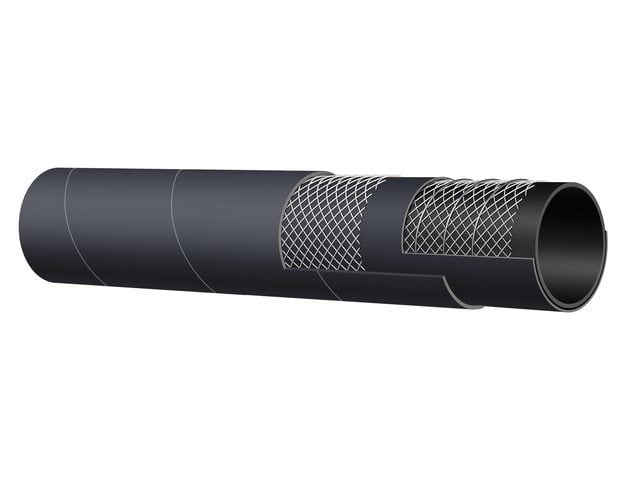
Exhaust hose.
Water lock.
In this piece I am talking about a water lift and not a water seal or water lock as this part is popularly called. A lock or lock gives the impression that something is locked, but this is not the case, water can come out of the lift but also enter if, for example, wave action rolls into the exhaust stroke. This can result in water hammer, so a water lift is only there to transport the cooling water to a higher location.
The exhaust hose is always lower than the waterline and runs from high to low of the engine, to get the water accumulating in the hose out, a water lift is needed that pushes the cooling water out. The principle of this is based on pressure created in the water lift by exhaust gases and water. The exhaust gases and the cooling water run to the lowest point where the water lift is, when the level of the water in the water lift has risen above the drain pipe, the pressure in the water lift rises, the exhaust gas now gradually pushes the water into the drain hose that passes through the hull goes off the boat. At a low speed, the cooling water is forced out in pulses with waves and at a high speed it will pass into a constant flow.
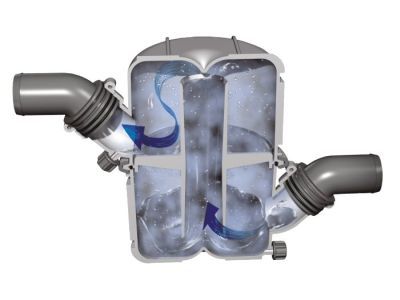
Water lock
Gooseneck.
At the back of the boat, water ingress is prevented by mounting a gooseneck, which should be approximately 45 cm high.

Gooseneck.
Winterizing the wet exhaust.
With a wet exhaust, some residual water always remains in the hose and water lift and to prevent freezing, the exhaust part must be protected with antifreeze.
Dry exhaust.
You will find the dry exhaust in lesser sizes on yachts because it has more disadvantages than advantages. A dry exhaust continues to produce a lot more exhaust noise and becomes very hot, so good insulation of the discharge pipe is very important, this reduces the radiant heat and the discharge noise. You can compare this exhaust system with that of a car, but it is more robust. The exhaust pipe is more robust and the possibly present silencer is also heavier in order to quickly prevent rusting. Never use a car damper on a ship, they are not suitable for this. A car damper often has a small hole to drain condensation water and a car damper is cooled by wind, which is not possible on a ship.





